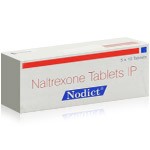Opioid Dependence: An In-Depth Exploration


Opioid dependence has rapidly evolved into a major global health concern, touching virtually every community and demographic. It encompasses a range of physical, psychological, and social challenges that require a comprehensive understanding and coordinated response. This article delves into the roots of opioid addiction, highlights critical signs of abuse, examines current dependence rates, clarifies the concept of uncomplicated dependence, and explores the effective role of Nodict in treatment.
What Causes Opioid Addiction?
Opioid dependence has emerged as one of the most pressing public health issues of the 21st century, affecting millions worldwide. Characterized by a compulsive need to use opioid drugs, this condition often leads to devastating consequences for individuals, families, and societies. Understanding its causes, identifying signs of abuse, comprehending its prevalence, and exploring treatments, including the role of medications like Nodict, is crucial for managing and mitigating its impact.
At its core, opioid addiction stems from the profound effects these substances have on the brain's reward system. Opioids, which include drugs such as morphine, heroin, oxycodone, and fentanyl, bind to specific receptors in the brain to block pain and release large amounts of dopamine. This flood of dopamine creates intense feelings of euphoria, reinforcing the behavior of taking the drug. Over time, the brain becomes reliant on the substance to trigger pleasurable feelings, and natural dopamine production diminishes, making it increasingly difficult for users to experience joy without opioids. Genetic predisposition, psychological conditions like depression and anxiety, social factors such as peer pressure, and environmental stressors significantly contribute to the risk of developing opioid dependence.
What Are the Four Most Common Signs of Opioid Abuse?
Recognizing opioid abuse early is crucial for effective intervention. Although the manifestations can vary, there are several hallmark indicators. First and foremost, individuals may exhibit physical changes, such as noticeable drowsiness, constricted pupils, and frequent flu-like symptoms. Behavioral signs are also prominent; a person might withdraw from family and friends, neglect responsibilities, and display erratic mood swings. Financial difficulties often accompany substance abuse as users prioritize obtaining the drug over other expenses. Lastly, an increasing tolerance to opioids, requiring higher doses to achieve the same effects, combined with withdrawal symptoms when not using, strongly signals dependence.
What Is the Opioid Dependence Rate?
Epidemiological studies provide a sobering picture of opioid dependence rates. Globally, it is estimated that more than 60 million people engage in non-medical use of opioids each year. In the United States alone, approximately 2.7 million people suffer from opioid use disorder, according to the National Institute on Drug Abuse. Trends indicate that synthetic opioids, especially illicitly manufactured fentanyl, are driving a significant increase in overdose deaths. In some regions, opioid dependence rates have risen by over 30% in the past decade, underscoring the urgent need for widespread public health interventions.
What Is Opioid Dependence Uncomplicated?
The concept of "opioid dependence uncomplicated" refers to a clinical presentation where the individual is physically dependent on opioids but does not exhibit the complex behaviors often associated with opioid use disorder (OUD). In these cases, dependence results primarily from prescribed medical use, such as long-term pain management, without the compulsive drug-seeking behavior or severe psychosocial consequences typical of full-blown OUD. Uncomplicated dependence still requires careful management to avoid progression to more severe conditions, especially during tapering or withdrawal phases.
The Role of Nodict in the Treatment of the Condition
In addressing opioid dependence, pharmacological interventions play a pivotal role alongside counseling and psychosocial support. One of the medications used in treatment is Nodict, known generically as naltrexone. Nodict acts as an opioid antagonist, binding to the same receptors as opioids but without activating them. By occupying these receptors, Nodict blocks the euphoric and sedative effects of opioid drugs. As a result, it reduces the incentive to continue opioid use, aiding individuals in maintaining abstinence.
The administration of Nodict usually follows detoxification, as initiating it in someone actively using opioids can precipitate acute withdrawal. Once a patient is opioid-free for a sufficient period, Nodict can be introduced as part of a comprehensive treatment plan. Its advantages include non-addictive properties and the absence of euphoric effects, distinguishing it from medications like methadone or buprenorphine that are also used in opioid dependence therapy.
Clinical trials and real-world studies have demonstrated the effectiveness of Nodict in improving treatment retention rates and decreasing relapse. However, success with Nodict often hinges on patient adherence, as daily oral administration or monthly injectable forms must be consistently maintained. Moreover, patients must be highly motivated, as Nodict does not alleviate cravings to the same extent as opioid agonists or partial agonists.
Integrated Approach to Treatment
The broader strategy for treating opioid dependence involves an integrated approach. Medical detoxification addresses the immediate physical aspects of dependence, while maintenance therapies like Nodict assist in sustaining recovery. Behavioral therapies, including cognitive-behavioral therapy (CBT), contingency management, and motivational interviewing, provide critical psychological support. Peer support groups and community resources offer ongoing encouragement and accountability.
Furthermore, public health initiatives focus on prevention, education, and harm reduction. These include prescription monitoring programs to prevent overprescribing, distribution of naloxone to reverse overdoses, and the establishment of supervised consumption facilities in some jurisdictions.
Despite these efforts, challenges remain. Stigma surrounding addiction often deters individuals from seeking help. Socioeconomic barriers, including lack of access to healthcare and affordable treatment options, further exacerbate the problem. Moreover, the evolving nature of the opioid crisis, with the rise of synthetic opioids and polysubstance abuse, complicates treatment protocols.
Looking forward, there is hope. Advances in medical research are yielding new medications and treatment modalities. Policies promoting the integration of mental health and substance use disorder services are gaining traction. Community-driven efforts are reshaping perceptions of addiction from a moral failing to a treatable medical condition.
Conclusion
In conclusion, opioid dependence is a multifaceted condition rooted in complex biological, psychological, and social factors. Recognizing early signs, understanding the prevalence, distinguishing uncomplicated dependence, and utilizing effective treatments like Nodict are all vital steps in addressing the crisis. Comprehensive, compassionate care that includes medication, therapy, and community support offers the best chance for individuals to reclaim their lives from the grip of opioids.
Article Post:Editorial Team of RXShop.md
(Updated at Apr 28 / 2025)

